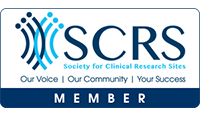Post-traumatic stress disorder (PTSD) is a mental health condition that’s triggered by a terrifying event — either experiencing it or witnessing it. Symptoms may include flashbacks, nightmares, and severe anxiety, as well as uncontrollable thoughts about the event.
How is post-traumatic stress disorder diagnosed?
To get clinically diagnosed with PTSD, a doctor will likely examine several factors. A physical examination may be conducted by a doctor to review any medical issues that may be causing the symptoms. Also, a psychological examination including a discussion of the signs and symptoms, and the event or events that led up to them may be given.
Diagnosis of PTSD requires exposure to an event that involved the actual or possible threat of death, violence, or serious injury. Your exposure can happen in one or more of these ways:
- You directly experienced the traumatic event
- You witnessed, in person, the traumatic event occurring to others
- You learned someone close to you experienced or was threatened by the traumatic event
- You are repeatedly exposed to graphic details of traumatic events (for example, if you are a first responder to the scene of traumatic events)
Is PTSD commonly misdiagnosed?
PTSD can be misdiagnosed as the symptoms or behaviors of other mental health conditions. Conditions such as anxiety, depression, acute stress disorder, and more, have similarities to PTSD. It is important to note that not everyone who experiences a traumatic event has PTSD. Individuals may also have PTSD along with another condition. For instance, this can be seen commonly with substance abuse disorder and PTSD.
It is important to receive the correct diagnosis to receive the proper care and treatment as not all treatment is the same. There are various evidence-based treatments for PTSD, including:
- Cognitive behavioral therapy (CBT): CBT helps people challenge the patterns of behaviors, feelings, and thoughts that are causing distress.
- Cognitive processing therapy (CPT): CPT helps people modify and challenge unhelpful trauma-related beliefs.
- Prolonged exposure therapy: This type of CBT teaches people to gradually approach memories, feelings, and places related to the trauma to learn that they aren’t dangerous.
Speak to your physician if you believe you may have PTSD and they will be able to provide you with an assessment for diagnosis.
PTSD Awareness Month
June is Post-Traumatic Stress Disorder (PTSD) Awareness Month, which raises awareness of people living with PTSD. If you’ve experienced or witnessed a traumatic event and now live with unwanted memories of the event, fear and anxiety, and feelings of isolation from family and friends, you may have PTSD.
Contact us to learn about a research study for people with PTSD or click this link: Studies – Preferred Research Partners



